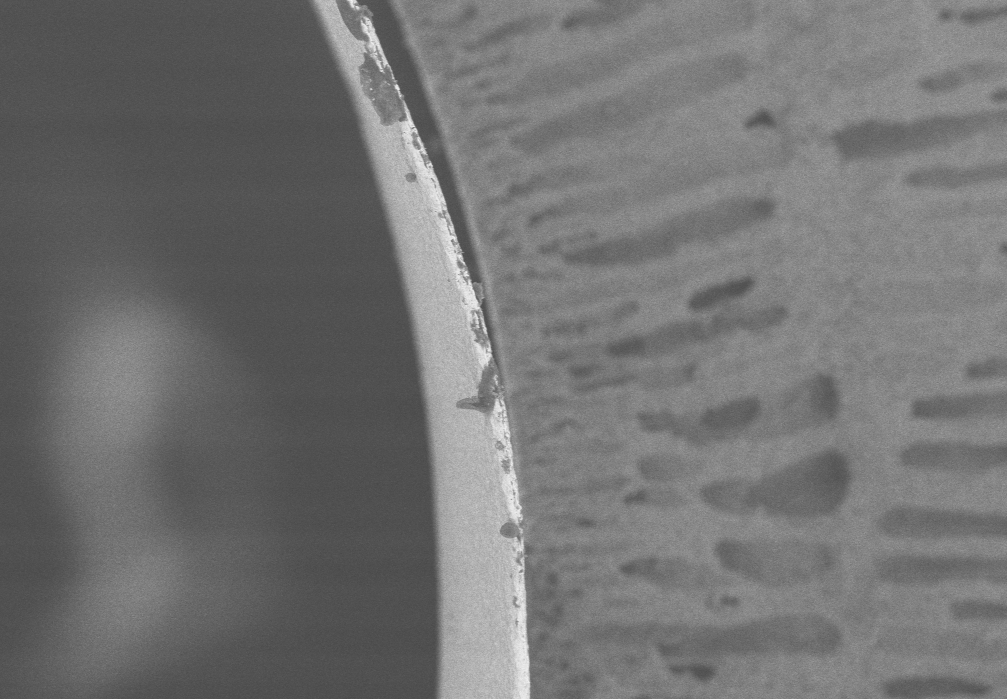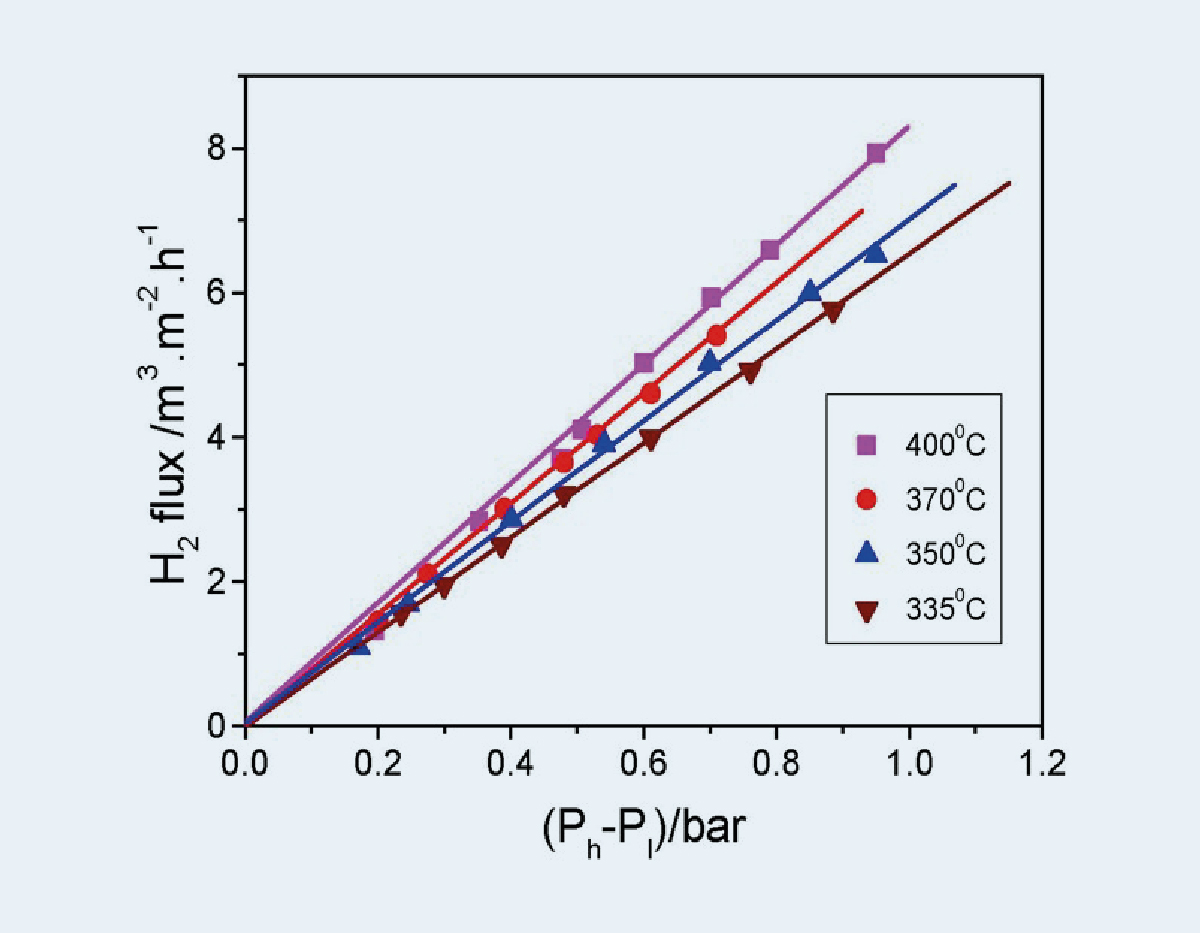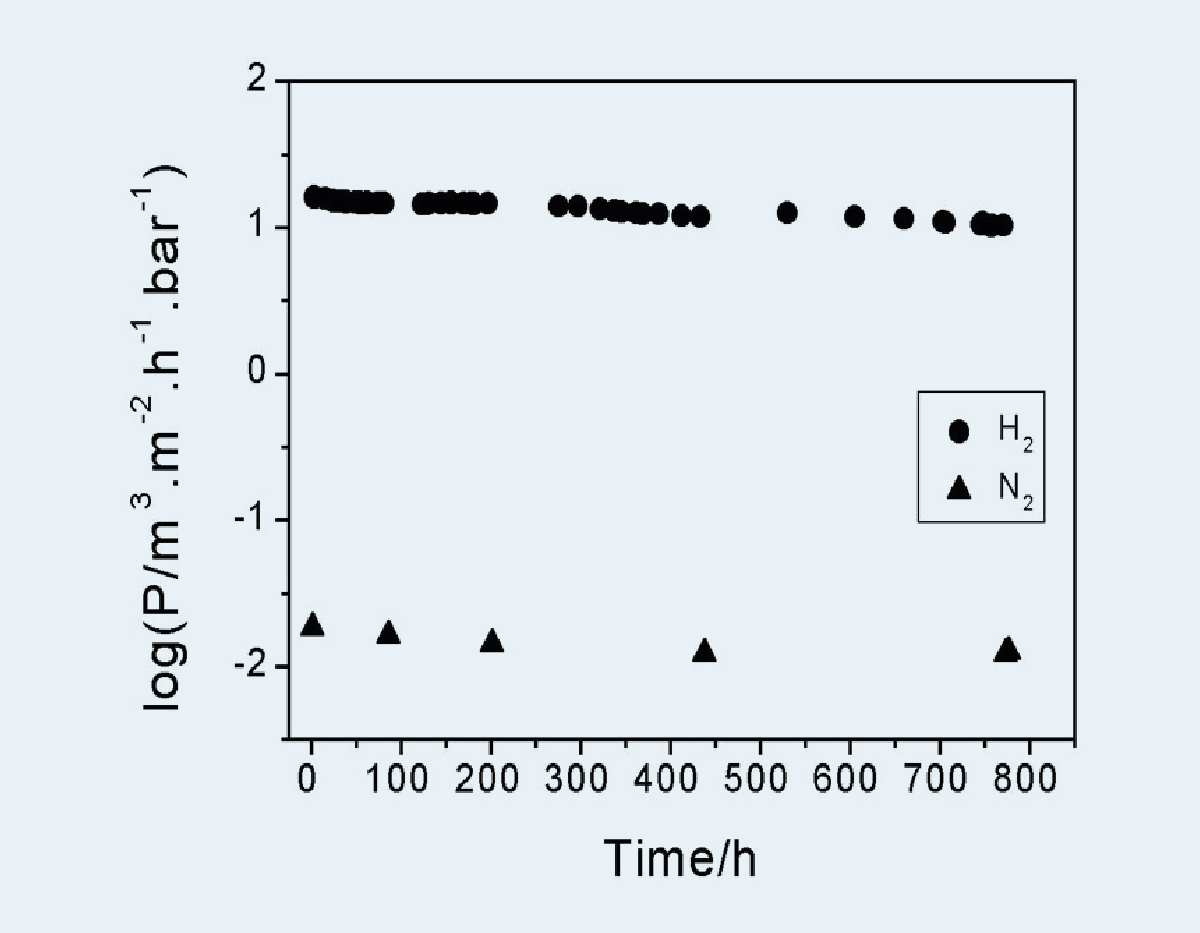Many metals are capable of reacting with hydrogen to form metal hydrides. Depending on the temperature, the hydride is highly mobile. If a thin, gas-tight layer of such a metal is used, this layer can be used as a selective membrane when a driving force for hydrogen transport is applied to the membrane.
Normally, palladium alloys are preferred for this gas separation, since thin layers of most other metals cannot withstand an aggressive atmosphere long enough. Since palladium is very expensive and the H2 permeation decreases with increasing layer thickness, layers with a thickness of less than 10 µm are necessary. On the other hand, the mechanical strength of such thin layers is not sufficient for practical applications. The solution to this problem is the deposition of palladium layers on porous supports. At working temperatures of several hundred degrees Celsius, only inorganic materials are suitable as mechanical support materials. Therefore, a technology for the production of porous, ceramic hollow fiber membranes was implemented at Fraunhofer IGB. These membranes have a diameter of less than 2 mm and walls that are up to 100 µm thin. The biggest advantage is their high specific surface area. Thus, they make compact gas separation modules with large membrane areas possible.
By electroless plating, we have deposited 4 µm thin palladium coatings on asymmetric ceramic hollow fiber membranes, which is possible on both the outer and inner sides. These metal coatings are gas-tight and their adhesion to the ceramic substrate is excellent. At 400°C, such membranes exhibit hydrogen permeation of over 8 m3m-2h-1bar-1. The corresponding N2 permeation rate was 10 l m-2h-1bar-1, giving a separation factor α (H2/N2) of 1000 [1].
 Fraunhofer Institute for Interfacial Engineering and Biotechnology IGB
Fraunhofer Institute for Interfacial Engineering and Biotechnology IGB

